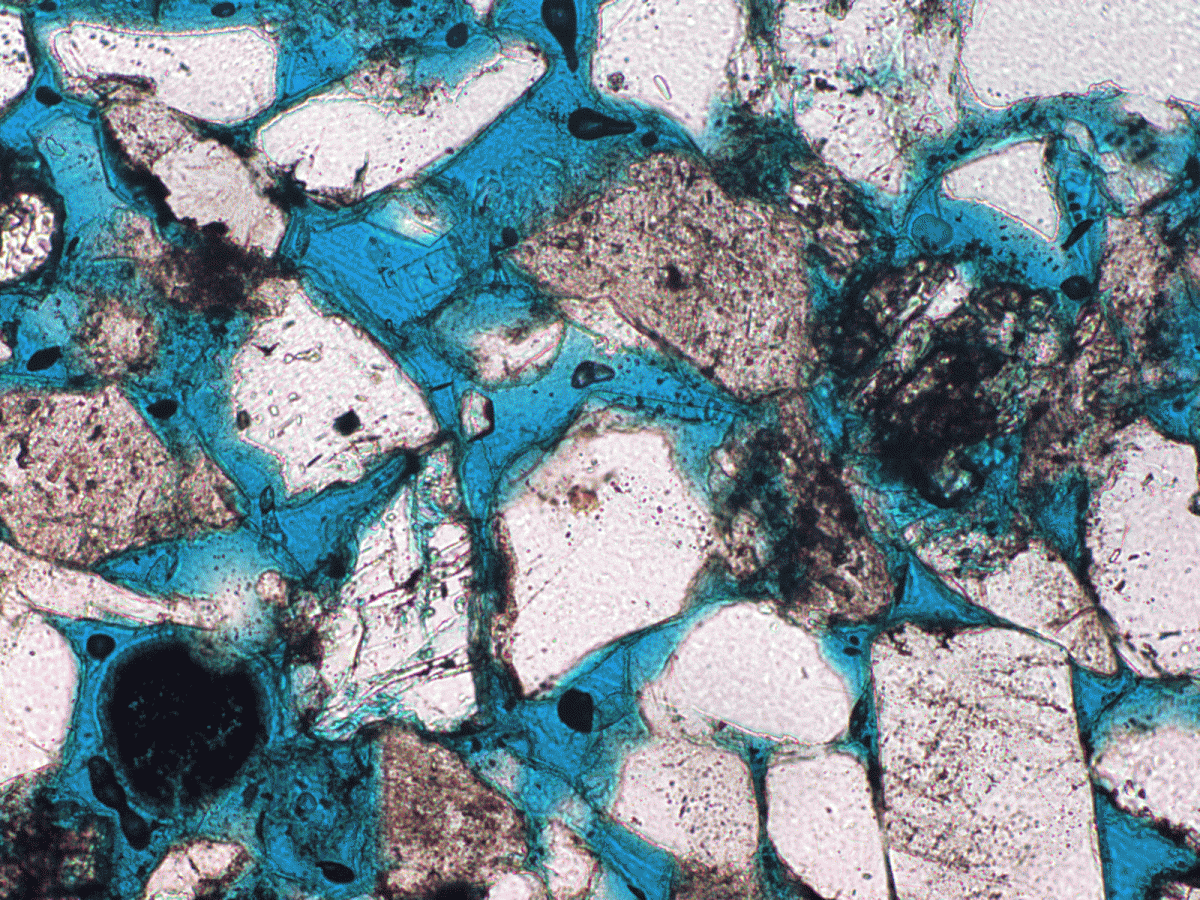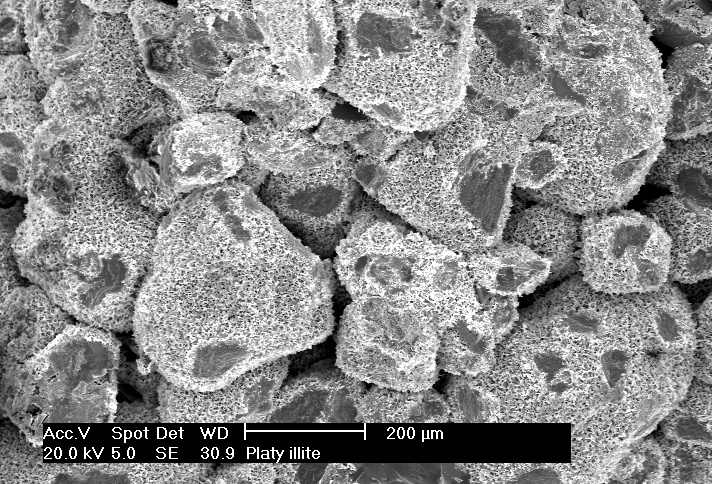Sandstones are an important rock type for the petroleum industry because the pore space between the grains may form a reservoir for commercial accumulations of hydrocarbons. In addition to the framework grains, sandstones usually also contain other minerals, notably various types of clay minerals growing on the surface of the grains, or lining and sometimes filling the pore space. Understanding the types and the distribution of minerals in sandstones is therefore key to understanding their properties such as porosity and permeability and ultimately behaviour as hydrocarbon reservoirs.


The mineralogical composition of sandstones is determined by accurate X-ray powder diffraction analysis. Detailed identification of the clay minerals present can also be made by XRD of various clay sized fractions extracted by sedimentation or centrifugation following dispersion. XRD analyses can be complimented by analysis by FTIR. Textural and morphological features can be determined by analysis in the Scanning Electron Microscope. We have considerable expertise in all three of these methods and can offer a service that combines the results from these techniques to provide you with an integrated understanding of the amounts, forms and distributions of minerals in your sandstones.


